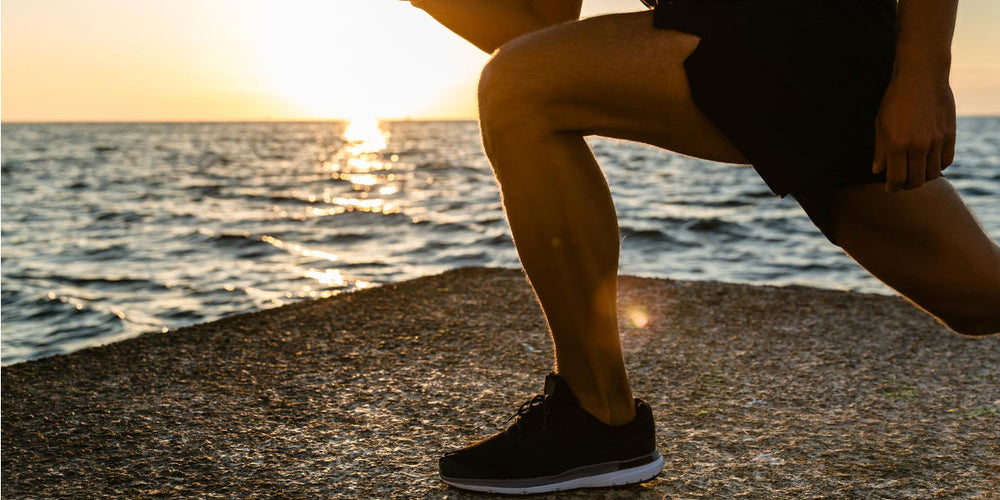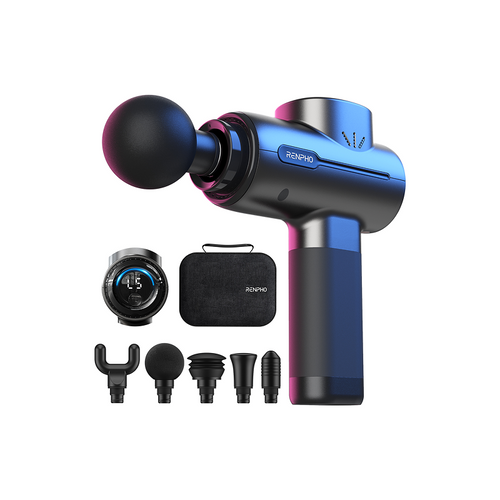Exercises To Strengthen Glutes & Squats

Stay tuned to our latest news
One of your resolutions this year is probably getting back into shape. However, when it comes to whole-body fitness, you shouldn’t forget about leg days. They are just as important as your other exercises.
According to Rondel King, a New York City-based Personal Trainer, doing leg exercises reduce your risk of injury, improve overall form, increase metabolism, and boost athletic performance. Moreover, working on your lower body can spare you from being associated with the term “chicken legs.”
Aside from leg days, your glutes also play an essential role in your overall performance. It doesn’t matter whether you’re an athlete or not. Having strong glutes can lead to better posture and fat loss. Furthermore, you can also experience less back and knee pain as a result.
But if you have weak glutes and often skip leg days, you can expect to experience difficulty with your daily activities. Moreover, it can also lead to a body that is out of proportion, strain your hips, experience back pain, and more. So if you want to start 2023 on a good note, here are 4 exercises you can do at home to strengthen these muscle groups.
Don’t Forget to Warm Up
Whatever fitness routine you plan to have this new year, being ready is always a good thing to keep in mind to avoid problems. Johnny Lee, Former President of the New York Heart Association, says that warming up before your workout routine prepares your body and ensures your heart rate is in line with your age group, as well as the type of exercises you’ll engage in. Some examples to prep your glutes and legs are high knees, glute bridges, leg swings, and jumping jacks.
Spending at least 10 minutes doing warm-up exercises reduces your risk of injuries, increases heart rate, and improves flexibility. Basically, warming up allows your body to prepare itself mentally and physically for whatever exercises you plan on doing.
Workout for Glutes and Legs
1. Sit-to-Stand Squats

How to do it:
1. Stand in front of your chair and face away from it. Remember to align your feet with your shoulders and your toes facing forward.
2. Bend your knees and lower your hips down. Ensure that your spine remains straight with your head and chest raised.
3. Gently tap the chair with your butt but don’t sit down.
4. Squeeze your glutes and hamstrings to lift your hips, returning to the starting position.
5. Repeat the previous steps and try doing 3 sets with 10 reps each.
This exercise is perfect for people who often find themselves in chairs for hours every day. As the name suggests, all you need is a chair, ideally without wheels, and you’re good to go. Essentially, what sit-to-stand squats do is strengthen your leg muscles and tone your quadriceps, gluteus maximus and calves.
If it seems a bit too much for you, try sitting down to rest after each rep. Pause for a moment whenever you need it. However, you can also try regular squats if you want that extra challenge.
Unlike other squat variations, the sit-to-stand squat is perfect for people new to working out. The chair is there to act as a support as you work on your glutes.
2. Pistol Squats

How to do it:
1. Stand with your feet hip-width apart and your toes pointed forward.
2. Extend your right leg forward, your foot flexed, and your toes pointed up. Extend both arms forward at shoulder level. Remember to look straight ahead.
3. Bend your left knee and slowly lower yourself to the ground. Stop when your glutes are a few inches above the ground.
4. Tense your glutes and use your supporting heel to lift yourself.
5. Switch sides and repeat the previous steps.
If you manage to do pistol squats, you’ll be able to identify imbalances in strength and mobility on either side. This exercise allows you to work on them and further reduce your chances of injury. Of course, it is also an excellent way to build up strength and improve your stability, control, balance, and flexibility.
While the sit-to-stand squats are for beginners, this exercise is more difficult as it demands more strength, mobility, and control. But don’t let it scare you. There are ways to modify your experience to make it easier should you need it.
For example, try doing regular squats, using a chair as support, or doing pistol squats with a counterweight. Going for the easier and more manageable route can reduce your chances of injury.
3. Goblet Squats

(Image Source: BarBend)
How to do it:
1. Stand with your feet hip-width apart and your toes pointed straight.
2. Hold the kettlebell with both hands as if you’re holding a goblet. Bend your elbows to ensure that your hands are positioned near the center of your chest.
3. Look straight ahead and engage your core muscles. Ensure that your spine remains straight.
4. Press your hips back and bend your knees. Remember to inhale as you do this step.
5. Press through your heels and return to the starting position. Remember to exhale as you do this step.
6. Repeat the previous steps until you finish your reps.
Doing goblet squats lessens the chance of injuries, prevents knee pain, and improves your overall jumping performance. Moreover, it is an excellent activity to perfect your squat form. It prevents you from making common beginner mistakes, such as leaning too far forward or allowing your knees to cave inward.
While the previous two exercises are for beginner and advanced levels, goblet squats are great for both. However, goblet squats requires you to have either a kettlebell or a dumbbell to get the most out of it.
Like the other exercises in this article, you can modify goblet squats to make them easier or more challenging for you. For example, you can perform the activity while pretending to hold a kettlebell. But if you want to make it more difficult, you can increase the weight of the goblet, increase your reps, or change your pace.
4. Jumping Squats

(Image Source: Shape)
How to do it:
1. Stand with both feet aligned with your shoulders and knees slightly bent.
2. Descend to a squat position and jump. Remember to engage your quads, glutes, and hamstrings.
3. Land with your knees slightly bent and go back to the squat position.
4. Repeat the previous steps until the set is complete.
If you want to improve your agility and vertical jump, then jumping squats is perfect for you. Other benefits include improving your lower body muscles, sprint performance, muscle endurance, and recovery.
You don’t need to buy any special equipment or tools. As long as you have enough space, then you’re good to go. Moreover, you can also combine this activity with others that include movements before and after the jump.
Tips to Improve Squat Mobility Range
However, achieving proper form while squatting isn’t easy, especially if it’s your first time getting into fitness. Often, your problem lies in your low hip flexibility and hip flexion. If the muscles involved in squatting have limited range, you’ll have trouble doing the exercise properly.
Fortunately, there are several stretches you can do to improve hip flexibility. Here are some examples:
• Kneeling Hip Flexor Stretch
• Hip Rotator Stretch
• Foam Roller Stretch
• Lying Hip Rotations
• Psoas Quad Stretch
Takeaway
This new year is the perfect time to get into fitness and improve your overall shape. Of course, you should never forget leg days as your lower body is essential in plenty of activities and sports. It doesn’t matter whether you’ve been physically active for years or someone who’s a beginner in fitness. These 4 exercises will help improve your overall body and performance.
Renpho Health Tips
-

Exercises to Condition Your Body for Fitness This New Year
January 8, 2023
Read more >
-

Kickstart Your New Year’s Fitness Resolution With Low-Impact Exercises
December 26, 2022
Read more >
-

Improve Your Flexibility & Workout Results with Dr. Devon
December 6, 2022/p>
Read more >
-

Mini Habits - Importance Of Rest & Recovery
November 29, 2022
Read more >
-

Importance of Negative Reps for Muscle Growth
November 8, 2022
Read more >






